Mechanical Back Pain
Table of Contents
What is Mechanical Back Pain?
Mechanical back pain, also known as non-specific back pain, is a common type of back pain that is primarily caused by the structures in the back, such as muscles, ligaments, and joints. It is called “mechanical” because it typically results from mechanical stress or strain on the spine, often due to poor posture, repetitive movements, lifting heavy objects incorrectly, or sudden awkward movements.
Back pain is a common condition believed to affect four(4) out of every five(5) adults at a few points during their lifetime. Mechanical back pain occurs when a structure in the back, like an intervertebral disc, joint, or bone, is impaired in a way to cause pain. When a load is applied to a structure past a fixed threshold, the tissue becomes irritated and improves pain. The pain will decrease if the load is reduced.
Mechanical back pain can be localized to small parts of the spine or it can expand other to either one or bilateral sides of the back. If a nerve root is also affected, the pain might radiate away from the back and down the leg, and even sometimes to the foot, along the path of the affected nerve.
How do I get Mechanical Back Pain?
Mechanical back pain can happen from an injury to the tissue, like a fall or a car accident, or it can come on slowly over time with no clear cause. Repeated spinal movements, exercising improperly, and poor sitting habits are some examples that can lead to the development of mechanical back pain over time.
What causes Mechanical Back Pain?
A precise cause of your severe mechanical back pain can be identified only 20% of the time. Sometimes, a specific accident or hard activity might cause the pain you are feeling. Still, 80% of the time, the special source of the pain is not found. Fortunately, most people recover in a relatively less period of time with simple treatment.
Mechanical back pain implies the source of pain is in the spine and its assisting structure. The surrounding muscles and ligaments might develop reactive spasms and pain.
What are the symptoms of Mechanical Back Pain?
Most people with mechanical back pain experience pain especially in their lower back. The pain might radiate (spread) to your buttocks and thighs. Many more people might also experience spasms with mechanical back pain. The symptoms of mechanical back pain are naturally more observable with flexion of the back and when lifting heavy things.
Symptoms of mechanical back pain can vary but often include:
- Pain: It may be localized to a specific area of the back or radiate to other parts of the body, such as the hips, buttocks, or legs. The pain is usually aggravated by certain movements or activities and may be relieved by rest.
- Stiffness: The back may feel stiff, making it difficult to bend, twist, or move freely.
- Muscle spasms: The muscles in the back may contract involuntarily, causing pain and discomfort.
- Limited range of motion: You may experience difficulty in performing certain movements or activities that require bending, lifting, or twisting.
- Tenderness: The affected area may be a tender point.
How is back pain diagnosed?
An aware evaluation of your medical history and a physical examination will assist your medical management provider decide if you have mechanical back pain. He or she will then work with you to produce an appropriate treatment plan.
If your medical management provider has determined your back pain is mechanical, additional testing is not naturally necessary. If your symptoms or the examination suggest the probability of infection, malignancy, or a pinched nerve, additional tests might be done. Additional testing may include blood tests, x-rays, computed tomography (CT) scans, magnetic resonance imaging (MRI), and/or nerve conduction studies.
How is Mechanical Back Pain treated?
The treatment for mechanical back pain typically involves a combination of self-care measures, conservative therapies, and, in some cases, medical interventions. Here are some commonly recommended treatments:
In a few people, a oversee physical therapy program for ongoing mechanical pain might is recommended. Talk to your doctor provider to see which treatment is right for you.
- Bed rest: Short periods of bed rest might be recommended for you if you have acute back pain and muscle spasms. Bed rest for more than 44 to 48 hours is seldom recommended.
- Physical activity: In some cases, Medical officer providers recommend advanced physical activity to encourage fast recovery from back pain. For moderate to mild back pain, you might be motivated to continue a near-normal schedule from the onset.
- Ice and hot application: Applying hot and ice alternately to the lower back is supportive to relax the muscles and decrease muscle inflammation. In common, you are encouraged to apply heat for 15 to 20 minutes, and then apply ice for 15 to 20 minutes. If you find that one application is other supportive than the other, then use only that application. Commonly, heat and/or ice should be applied two(2) to three(3) times per day.
- Medications: If you have muscle spasms, a muscle relaxant might be prescribed for a short period (3 to 4 days). Nonsteroidal anti-inflammatory drugs (NSAIDs) like ibuprofen or naproxen are available without prescription and might be used to decrease pain. Stronger prescription pain relievers are rarely needed.
- Physical therapy: In some cases, physical therapy might be an essential part of severe back pain rehabilitation. It is most important that you work with a physical therapist trained in this exercise approach to promote fast healing. Active physical therapy can assist shorten the recovery period and return you to work and inactivity activities as immediately as possible. Active physical therapy is an exercise program that might need home exercises as frequently as every 2 (two) to 3 (three) hours while you are watchful. The exercises commonly take about five minutes to do and do not need special equipment, nor do you need to go to a gym to do them.
- Injections: In some cases, corticosteroid injections may be administered directly into the affected area to reduce inflammation and provide temporary pain relief.
- Surgery (rare cases): Surgery is typically considered when conservative treatments have failed, and there is an identifiable structural problem causing the back pain (e.g., herniated disc, spinal stenosis). Surgical options vary depending on the specific condition.
If you are experiencing back pain, it is essential to consult a doctor professional for a proper diagnosis and personalized treatment plan. They can assist identify the underlying cause of your pain and recommend the most appropriate interventions for your special condition.
Physiotherapy Treatment
Physical Therapy for Mechanical Back Pain:
- Physical therapy and movement may be advised after the initial pain decreases. Physical activity promotes the preferable healing of strained muscles and improves blood circulation.
- Physical therapy and rehabilitation techniques assist in relieving muscle strain and decreasing mechanical back pain.
- Resuming work and performing regular activities following mechanical back pain depends on the severity of the condition. Most cases of back pain recover in a few days or weeks and regular activities can be taken up. Still, it is preferable to avoid strenuous physical activities, bending and lifting heavy weights if one is suffering from mechanical back pain. It is advisable to seek a medical opinion before including in sports, recreational activities, and adventure games.
- Further incidents of back pain can be prevented by following a healthy routine, regular physical exercises, and a healthy diet. Avoid smoking, limit alcohol, drink other water, and maintain weight to remain healthy.
Exercises for Mechanical Back Pain
- Exercises for mechanical back pain should be presented under supervision and as advised by the physician.
- Find a few of the best back-strengthening exercises that can be supportive of mechanical back pain. Rest on your back with knees raised and feet on the floor
- and perform the following:
- Static Back Exercise: Press the low back region, so that it touches the ground; hold and release.
- Pelvic Bridging: Raise your hip and pelvic section, hold, and release.
- Knee to chest: Bend your one knee and bring it close to touch the chest. Repeat the same with the other knee. Perform the same with your both knees together.
- Cat-Cow Stretch: Lie on all fours. Strengthen the back to form a curve of the back and then release. Walking in a swimming pool and aquatic exercises also help in relieving mechanical back pain and should be performed as advised.
Prevention
Prevention of occupational low back pain includes physical, prepared, and cognitive measures. The physical measures should distribute with the biomechanical aspects, posture at work, handling of material and loads, repetitive movements, job descriptions, and occupational health and safety. Prepared prevention should focus on communication, resource management, job descriptions, the organization of time at work, on teamwork, on paradigms of work, on cooperative working, prepared culture, prepared networking, teleworking, and quality management.
The cognitive component involves studying psychological processes, the mental workload at work, decision-making, specialist performance, man-machine interaction, stress, and training. In this way, the psychosocial factors that give to the emergence of occupational low back pain can be prevented, including job dissatisfaction, monotonous work, the wear aroused by work overload, the lack of autonomy, and competition with colleagues.
Prognosis
The occupational prognosis of patients with usual low back pain should not depend on the appearance of images (degeneration of discs or osteophytes) of the lumbar spine of the patient. Detection of signs meaningful of non-organic pain does not imply poor prognosis – if patients are treated properly. The presence of adverse psychosocial factors can predict a greater number of days off work if the sufferer is not treated properly.
One group of researchers has proven that even patients with apparently refractory usual low back pain strongly associated with psychosocial factors might exhibit significant improvements if managed with multidisciplinary rehabilitation that adequately distributes the somatic symptoms and not just the regional physical pains or with supposed anatomic findings that are of small relevance. Another study supported these conclusions that treatment and improvement are possible with patients with chronic low back pain, even in long-term cases.
Summary
Massage therapy: Massage can help relax the muscles, improve blood circulation, and reduce pain and tension in the back. It can be beneficial in combination with other treatments.
Mechanical back pain, also known as non-specific back pain, is a common type of back pain caused by strain or stress on the structures of the back. It is often related to poor posture, repetitive movements, or sudden awkward movements. Symptoms include localized or radiating pain, stiffness, muscle spasms, limited range of motion, and tenderness.
Treatment for mechanical back pain typically involves a combination of self-care measures and conservative therapies. Self-care measures include rest, heat or cold therapy, over-the-counter pain relievers, and maintaining a healthy weight. Conservative therapies may include physical therapy, chiropractic care, massage therapy, and medications if necessary. In rare cases where surgery may be considered.
It’s important to consult with a healthcare professional for an accurate diagnosis and to receive appropriate treatment based on the underlying cause and severity of the mechanical back pain. They can guide you through the necessary steps to manage and alleviate your symptoms.
FAQs
Mechanical pain occurs when stress is placed on the bones, discs, or nerves in your spine. The anatomical space for these structures is very restricted, so any deformity in the structure of your spine will put pressure on sensitive parts and result in pain.
Mechanical pain is a subset of nociceptive pain that happens because of injury to, in, or around the structure of joints. Severe inflammation often occurs with mechanical pain. Osteoarthritis, low back disorders, and tendinitis are usual examples of mechanical pain.
An example is a back muscle strain due to an athletic injury or other injury. Nonspecific back pain is commonly mechanical in nature, in that it is brought on when the spine moves. Muscle imbalances and wear and tear on joints over time might impart to mechanical pain.
Most people with severe mechanical back pain respond very fast to treatment. About 90% of people with severe low back pain are symptom-free in 1 (one) to 2 (two) weeks. Many of the remaining estimated 10% to 15% recover within 3 (three) months. Recurrences of back pain are common.
Physical examination of a patient with back pain should involve a Range Of Motion (ROM) and a thorough neurologic examination, involving an assessment of peripheral motor function, sensation, and deep tendon reflexes. Perform a straight-leg examination with the patient in a supine position. Record the response to increasing each leg.
Mechanical low back pain is a pain that cannot be attributed to an issue with one particular area of your spine and is related to movements of the lumbar and sacral regions of the spine. This is the most usual form of back pain. As many as 80% of people experience back pain at a few points in their lives.
Mechanical lower back pain is a pain in your lower back that naturally varies with certain positions or activities and so can come and go. It is the most common issue that affects over 85% to 90% of people at a few points in their life. This type of pain can develop slowly over time or come on suddenly.
Heat therapy can assist ease severe and chronic back pain. A person should apply heat to their back to assist relax the muscles, decreasing pain. Applying heat to the muscles can cause the blood vessels to dilate, increasing circulation. This promotes the healing of any injured muscle.
Exercise has been found to be one of the most effective ways to relieve back pain immediately. Try swimming, walking, or yoga.
Going on walks: Initial research recommends that going on a walk or brisk walking (Nordic walking) can assist relieve back pain if done regularly, for instance, every two days for 30 to 60 minutes.

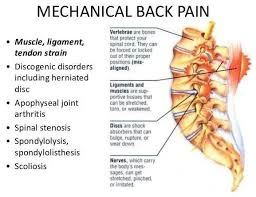


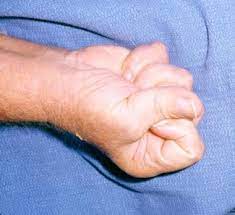
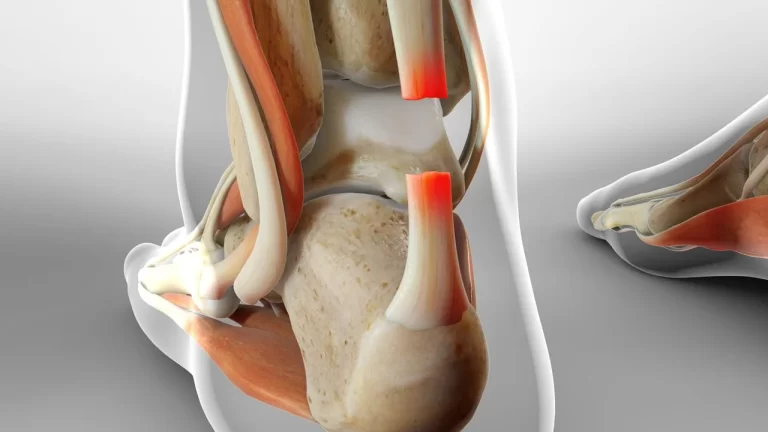
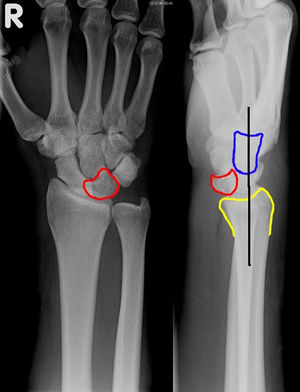
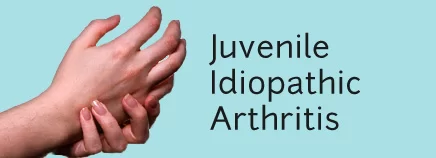
One Comment